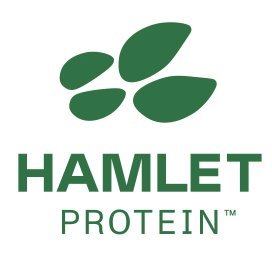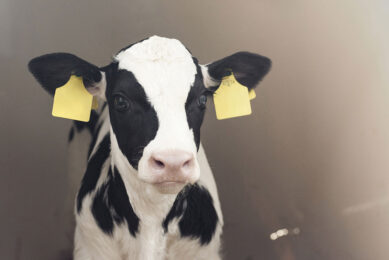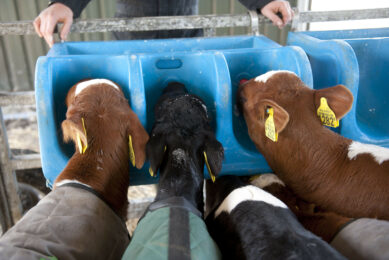Calf starter feed: 3 reasons why protein quality matters
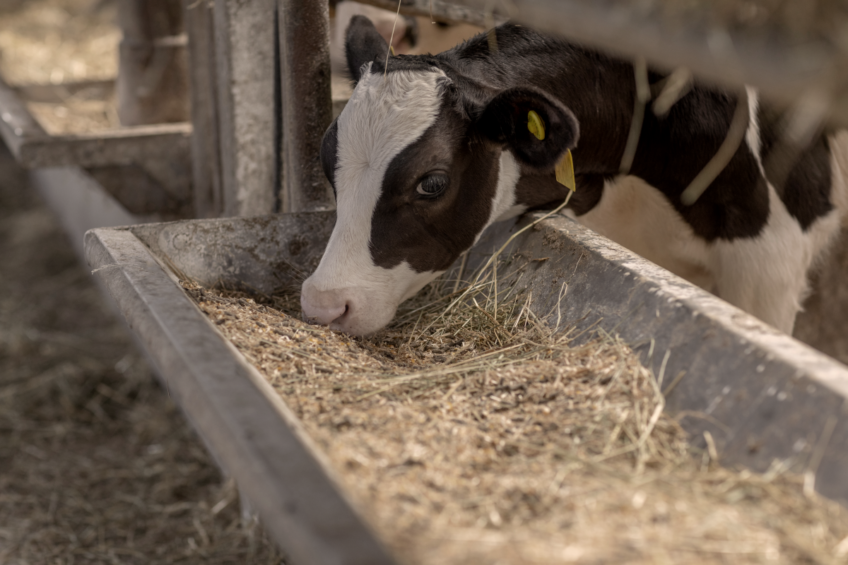
At weaning, an immature gastrointestinal system is the main reason for complications in calves’ transition to ruminants. Newborn calves function as monogastrics with the oesophageal gutter directing colostrum and then milk into the abomasum, bypassing the rumen. With limited secreted digestive enzymes, young calves require highly digestible ingredients. During the first few weeks, nutrients, mainly of dairy origin, are absorbed in the small intestine.
The calf’s birth weight typically doubles at weaning. This external growth is accompanied by the internal development of the rumen and its papillary exchange surface. This rapid muscle and tissue growth highlights the importance of early protein nutrition.
 Starter feed is key to successful weaning
Starter feed is key to successful weaning
Milk feeding is transient and starter feed, which aims to initiate rumen development and encourage calves to consume solid feed before weaning, gradually takes over. High nutrient absorption is essential to replace milk and support the rapid weight gain of the young ruminant.
At the time of weaning, rumen functions are strengthened, and the consumption of solid feed becomes the main source of protein. In the classic feeding plan below (Figure 1), protein intake from calf milk replacer (CMR, 25% crude protein) and calf starter feed (CSF, 18% crude protein) balances between weeks 5 and 6. By week 10, just before weaning, the starter feed provides 82% of the protein intake!
Figure 1 – Protein supply to calf from liquid (CMR) and dry starter feed (CSF) in a standard calf feeding programme.
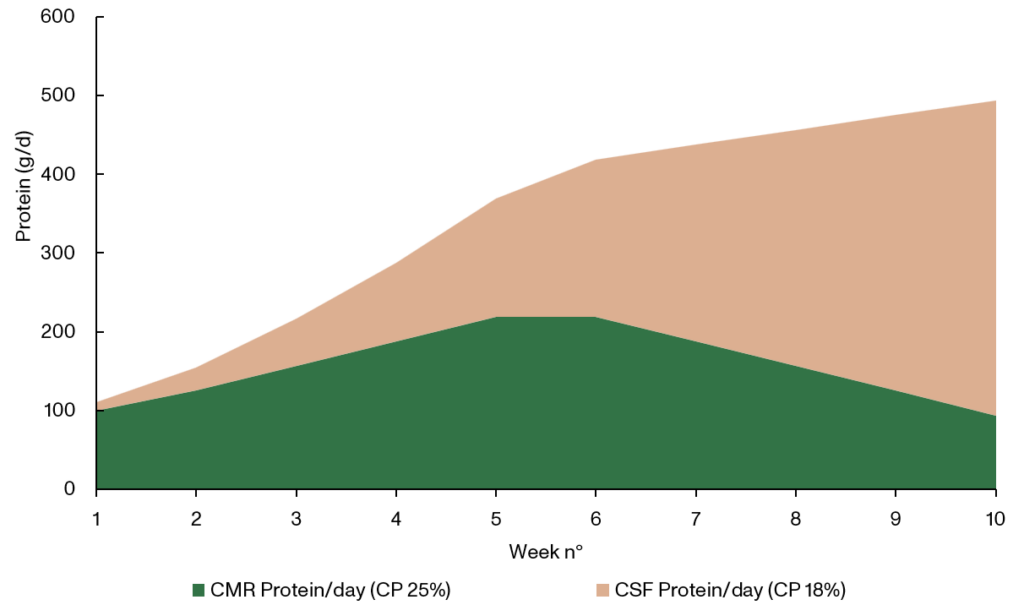
Choosing the right protein sources is crucial for overcoming digestive challenges during this transition phase. If nutrients are not sufficiently absorbed, calf growth can be compromised, leading to a decline in feed intake and daily gain after weaning, known as the weaning dip. Therefore, an adequate supply of energy and protein in starter feed promotes the development of ruminal functions in calves.
 Not all protein sources are equal
Not all protein sources are equal
Soy is a well-balanced, easily accessible protein. However, the natural presence of anti-nutritional factors (ANFs) makes conventional soy better suited for animals with mature digestive systems. Harmful to intestinal health and animal growth, ANFs can slow protein and mineral digestion, and cause flatulence, diarrhoea, and immune responses.
Yet, conventional soybean meal frequently appears as the main protein ingredient in starter feed formulations. This can be problematic for young animals.
Hamlet Protein’s enzymatic treatment makes it possible to safely reduce the ANF content present in soy. The result is our speciality protein HP 300. A recently published study by the University of Illinois (Figure 2) shows how HP 300 works at rumen level as a substitute for soybean meal (SBM) in starter feed.
Figure 2 – (left) Duodenal flow of NPN (g/kg DMI) and (right) efficiency of microbial synthesis (microbial N, g/kg CP) as measured at the duodenum of cales fed calf starters with soybean meal (SBM) or HP 300 as the main source of protein. a, b indicate significant differences (p<0.05)
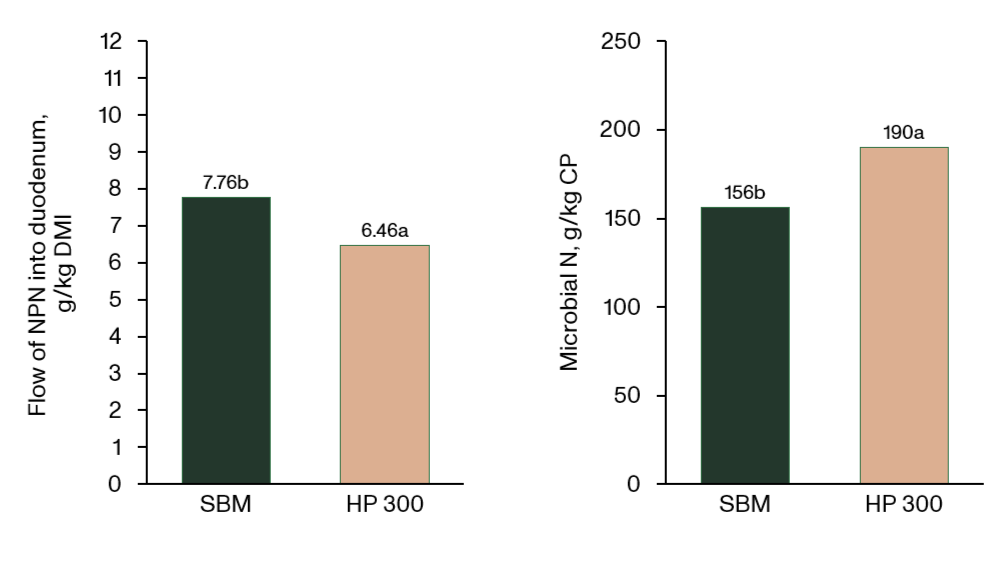
Substituting crude soy protein with HP 300 increases microbial protein and reduces non-protein nitrogen flow to the gut. In other words, the rumen, at this early stage, responds clearly to a change in the nature of the proteins provided by a better biomass production with a better use of non-protein nitrogen through this improved biomass production. This rumen activation is key to the transition to full ruminant status, as protein supply largely depends on the rumen’s ability to provide microbial protein to the gut.
 What happens in the rumen affects the gut
What happens in the rumen affects the gut
The rumen, through its ability to ferment the organic matter of the ruminant ration, often appears as a barrier/filter against antinutritional factors and the various toxins that can affect the rations. This is without considering the intrinsic capacities of the rumen, which the calf acquires gradually during its first months of life.
The immaturity of the rumen before weaning explains why it only partially ferments the components of the solid ration. Additionally, what is not fermented in the rumen will be transferred intact to the abomasum and the intestine. It has been measured in the experiments referenced above (Ansia et al. 2021) that a significant fraction of the proteins (around 42% for SBM starter feed) was not fermented in the rumen and arrived intact at the intestinal level. This rumen bypass due to functional immaturity carries a significant risk of the passage of ANFs such as antitrypsin factors or allergenic proteins as Beta conglycinin to the intestine of the young calf.
This incomplete filtering of soy ANFs exposes calves to potential issues with protein digestibility, faeces consistency and impaired growth. Using a protein source free of ANFs in starter feed ensures that the rumen bypass protein is efficiently absorbed in the intestine without disrupting gut health.
Conclusion
As weaning approaches, starter feed clearly takes the lead over milk replacer when it comes to the supply of protein to the young calf. For a successful start, choose a clean protein source in starter feed. It can make a big difference when considering the functional status of the rumen and its impact on the digestion and gut health of the calf in transition.
Join 13,000+ subscribers
Subscribe to our newsletter to stay updated about all the need-to-know content in the dairy sector, two times a week.


